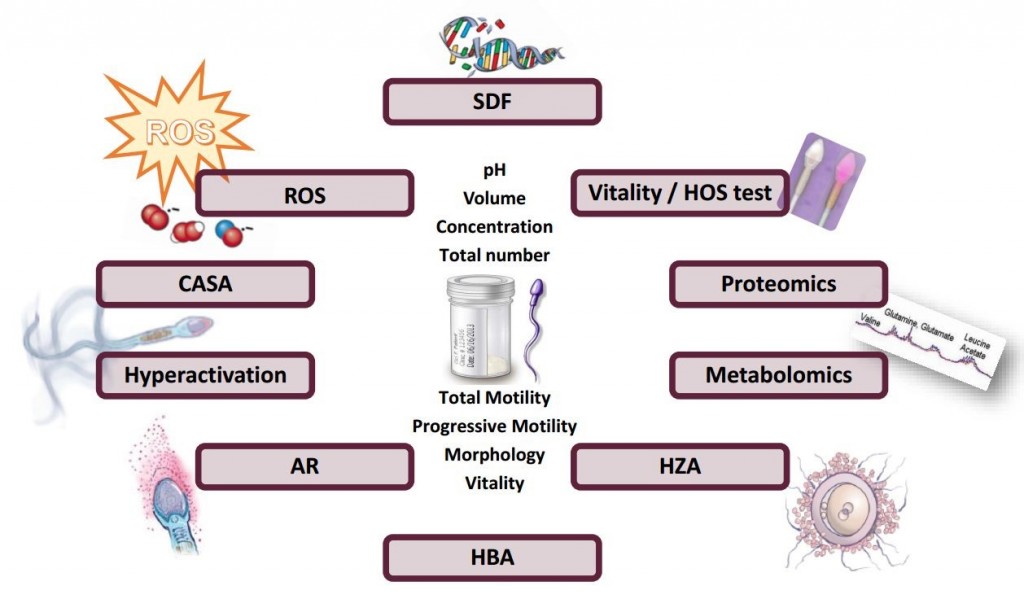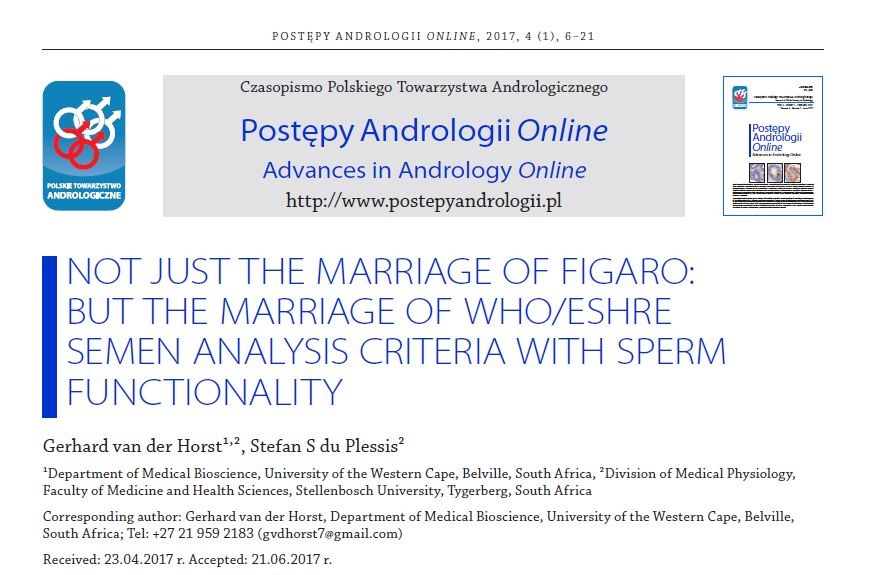Marriage of WHO5 and sperm functionality review and debate
Since the appearance of the semen analysis manual of the World Health Organization in 2010 (WHO5), there has been many critical debates about its value and use. In a recent review by Van der Horst and Du Plessis (2017) most of these aspects have been addressed and summarized but also many new suggestions have been made for its use, interpretation of results and improvement at different levels.

Fig. 1: Diagram from review paper (Van der Horst and Du Plessis, 2017) showing in the centre the traditional semen parameters and around it the sperm functionality aspects that need to be assessed. Many of the sperm functional aspects have been simplified to be used in the routine clinical laboratory.
The first critical aspect is that most users globally apparently wrongly assume that WHO5 presents a guide to establish the fertility status of an individual often based on one semen collection only. Instead the authors have emphasized that the manual represent standardized methodology to evaluate the quality of a semen sample and this does not automatically translate to the individual’s fertility status. It is argued that the basic semen parameters such as sperm concentration, sperm motility and morphology are useful if measured in a quantitative fashion (CASA) and as part of a more comprehensive assessment including sperm functionality (Fig. 1). Unfortunately, as it stands, the basic approach in semen analysis has not really changed in 50 years except for cut-off points. Accordingly, there is a need to move more boldly and progressively to develop a combination of sperm parameters and sperm functional tests that advises us better on male fertility potential. In this respect it is hoped that there can be a marriage among the various aspects listed in Fig. 1. Not just the Marriage of Figaro but hopefully the marriage in the near future of updated and quantitative semen/sperm analysis and quantitative sperm functional tests.
Van der Horst and Du Plessis (2017) suggest that the current conflicts can be resolved and quote directly from the review:
- “The WHO5 manual for semen analysis should be used for what it is intended for, to evaluate semen quality according to very specific consensus methodology. But this will only be realized if laboratories follow these methodologies correctly and this is not currently the case.
- More objective technologies such as CASA should be used to gradually replace manual methods but only if these new technologies have proven to relate to earlier manual methods and are more consistent. The CASA technologies should include at least fully automated analysis of sperm concentration, sperm motility, sperm morphology including the TZI index, sperm vitality and sperm fragmentation.
- Sperm functionality as outlined (Fig. 1) should be seriously addressed and incorporate on the one hand those functional aspects that relate to challenges in the female reproductive tract and actually relate to fertility (sperm cervical mucous penetration, capacitation with hyperactivation as endpoint, acrosome reaction and sperm zona binding). All these aspects (including acrosome reaction) can be objectively determined using several CASA systems. Also these can be done manually, but without assuring reliability.
- The marriage requires that we systematically establish a matrix where sperm functional tests, sperm quality parameters and many other factors such as female cryptic choice, psychological factors including stress are considered.”
Reference:

Front page of review paper referred to.
Prof Gerhard van der Horst (PhD, PhD)
Senior Consultant
MICROPTIC S.L.



Leave A Comment